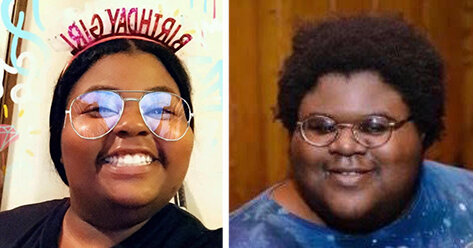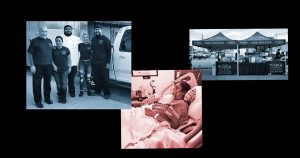Mychaela Francis was home with her brother, Byron, when she saw he was struggling to breathe.
Paramedics rushed him to Florida Medical Center on June 27. He died that day of the coronavirus. He was 20.
Three days later, Ms. Francis, 22, began complaining of headaches and a fever, according to her family. Terrified, she insisted that her mother take her to the hospital. She died on July 8, according to the Broward County Medical Examiner’s Office, which confirmed that the cause of death for both siblings was Covid-19, the disease caused by the new coronavirus.
The deaths of two young siblings, within 11 days of each other, have devastated their large family in Lauderhill, Fla. They have also underscored two disturbing developments in the coronavirus outbreak: the surge of cases in states like Florida that reopened swiftly, and the rising number of people in their 20s, 30s and 40s who are testing positive for the virus. In Florida, the median age of residents testing positive has dropped to 40, down from 65 in March.
There have been at least 369,826 cases of the coronavirus in Florida, according to a New York Times database. As of Wednesday morning, at least 5,205 people had died. Four children between the ages of 10 and 17 have died of the virus, according to the Florida Department of Health.
Gov. Ron DeSantis, who has refused to mandate wearing masks in Florida and once boasted of the low numbers of cases in the state compared with places like New York, has pushed back against the idea that hospitals have been overwhelmed with cases. At a Covid-19 briefing in Tallahassee on Tuesday, he said that statewide, a large number of hospitals and intensive care units had beds available.
“I think we’re going to get through it,” he said. “I think we’re on the right course.”
On Monday, Mr. DeSantis was heckled by protesters in Orlando, where he had traveled for a news conference to encourage residents to donate blood.
“You’re lying to the public!” protesters yelled. “Shame on you.”
Byron and Mychaela Francis became ill less than two weeks after they got back from a family trip to Orlando, according to Darisha Scott, their cousin, who had joined them with her children.
Because state officials had lifted restrictions, the family felt reasonably secure leaving Broward County, where masks are mandatory and a curfew has since been put in place to deal with the pandemic.
“We said, ‘Let’s go get the kids out of the house,’” Ms. Scott, 31, said. “And then all this happened.”
The family went to Universal Studios, where masks were required and rides were wiped down regularly. Employees repeatedly passed around hand sanitizer to people standing in line, Ms. Scott said. Mr. Francis did not go to the theme park, his mother told The South Florida Sun-Sentinel.
But in stores like Walmart, masks were not required at the time, and although Ms. Scott said her relatives covered their faces when they went into the stores, other customers did not, she said. On Monday, Walmart began requiring customers to wear masks inside its stores.
Ms. Scott’s 8-year-old daughter, who has sickle cell anemia, began complaining of headaches and a fever soon after they returned, Ms. Scott said. She tested positive for the virus. Then, Ms. Scott said, her cousins got sick.
The suddenness of Mr. Francis’s death shocked the family, Ms. Scott said, but they held out hope that his sister would recover.
“We were all scared but trying to be optimistic because we felt that Mychaela caught it early,” she said. “It felt like she had a chance.”
Both siblings had underlying medical issues, including obesity and asthma, according to the medical examiner’s office. Ms. Francis also had chronic obstructive pulmonary disorder.
The Coronavirus Outbreak ›
Frequently Asked Questions
Updated July 22, 2020
-
Why do masks work?
- The coronavirus clings to wetness and enters and exits the body through any wet tissue (your mouth, your eyes, the inside of your nose). That’s why people are wearing masks and eyeshields: they’re like an umbrella for your body: They keep your droplets in and other people’s droplets out. But masks only work if you are wearing them properly. The mask should cover your face from the bridge of your nose to under your chin, and should stretch almost to your ears. Be sure there are no gaps — that sort of defeats the purpose, no?
-
Is the coronavirus airborne?
- The coronavirus can stay aloft for hours in tiny droplets in stagnant air, infecting people as they inhale, mounting scientific evidence suggests. This risk is highest in crowded indoor spaces with poor ventilation, and may help explain super-spreading events reported in meatpacking plants, churches and restaurants. It’s unclear how often the virus is spread via these tiny droplets, or aerosols, compared with larger droplets that are expelled when a sick person coughs or sneezes, or transmitted through contact with contaminated surfaces, said Linsey Marr, an aerosol expert at Virginia Tech. Aerosols are released even when a person without symptoms exhales, talks or sings, according to Dr. Marr and more than 200 other experts, who have outlined the evidence in an open letter to the World Health Organization.
-
What are the symptoms of coronavirus?
- Common symptoms include fever, a dry cough, fatigue and difficulty breathing or shortness of breath. Some of these symptoms overlap with those of the flu, making detection difficult, but runny noses and stuffy sinuses are less common. The C.D.C. has also added chills, muscle pain, sore throat, headache and a new loss of the sense of taste or smell as symptoms to look out for. Most people fall ill five to seven days after exposure, but symptoms may appear in as few as two days or as many as 14 days.
-
What’s the best material for a mask?
- Scientists around the country have tried to identify everyday materials that do a good job of filtering microscopic particles. In recent tests, HEPA furnace filters scored high, as did vacuum cleaner bags, fabric similar to flannel pajamas and those of 600-count pillowcases. Other materials tested included layered coffee filters and scarves and bandannas. These scored lower, but still captured a small percentage of particles.
-
Does asymptomatic transmission of Covid-19 happen?
- So far, the evidence seems to show it does. A widely cited paper published in April suggests that people are most infectious about two days before the onset of coronavirus symptoms and estimated that 44 percent of new infections were a result of transmission from people who were not yet showing symptoms. Recently, a top expert at the World Health Organization stated that transmission of the coronavirus by people who did not have symptoms was “very rare,” but she later walked back that statement.
The siblings’ mother, Monete Hicks, has had difficulty sleeping since the deaths of her children, said Tanra Washington, 34, another cousin.
“It’s a deadly matter,” she said. “It’s not fair to bury a loved one because of other people’s ignorance, or insensitivity to this matter.”
Relatives described Ms. Francis as a warm, ambitious woman who was working at Little Caesars and was babysitting as she worked to open a clothing and eyelash business. She had named it “Pretty Everlasting.”
Mr. Francis, who loved comic books and was called Big Teddy Bear by his family, also babysat and put his savings into his sister’s business.
The family held a funeral for the siblings on July 17.
Ms. Scott said the deaths of her cousins should be a warning to anyone who has resisted wearing a mask or a face covering.
“I don’t want anyone to experience losing one, let alone two, of their children,” she said. “Take it seriously. If not for the health of someone else, for the health of your family. This is not a game.”
Ms. Scott added: “Be mindful of everyone. We have to share this world with everyone.”
Susan C. Beachy contributed research.



















